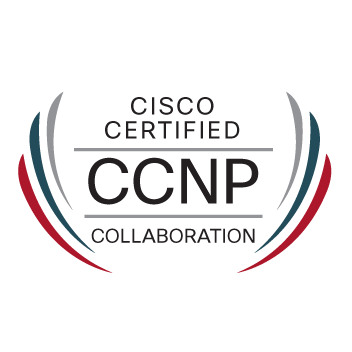- Cisco Community
- Technology and Support
- Collaboration
- Collaboration Applications
- Hi Rene,When you make a
- Subscribe to RSS Feed
- Mark Topic as New
- Mark Topic as Read
- Float this Topic for Current User
- Bookmark
- Subscribe
- Mute
- Printer Friendly Page
- Mark as New
- Bookmark
- Subscribe
- Mute
- Subscribe to RSS Feed
- Permalink
- Report Inappropriate Content
07-09-2015 05:03 AM - edited 03-17-2019 05:20 PM
Hello,
we have CUCM 10.5 and CUCM IM+P 10.5 running with Jabber for Windows 10.6.x (tested with .1, .4, .5).
I pull my Directory Integration Parameters from UC Service Profile in CUCM which is associated to an user (EDI Directory Integration). I have no Directory Parameters in jabber-config.xml and I also have no DNS SRV Records setup in DNS. So whenever I am going to do a change in the Service Profile on CUCM (like change the primary Directory Server), I have to log out from Jabber and have to do a client reset. Only after that, Jabber pulls the new config from CUCM.
My question is, is this behavior working as designed, or might there be a misconfiguration or a bug?
Hope someone can help.
Thanks,
Rene
Solved! Go to Solution.
- Labels:
-
Jabber
Accepted Solutions
- Mark as New
- Bookmark
- Subscribe
- Mute
- Subscribe to RSS Feed
- Permalink
- Report Inappropriate Content
07-10-2015 12:03 AM
Hi Rene,
You will need _cisco-uds for the service profile to be used. Here is a excerpt from the jabber deployment guide.
With Cisco Unified Communications Manager version 9 and higher, you can provision users with service profiles and deploy the _cisco-uds SRV record on your internal domain name server.
The client can then automatically discover Cisco Unified Communications Manager and retrieve the service profile to get directory integration configuration.
-
Deploy the _cisco-uds SRV record on your internal domain name server.
-
Ensure that the client can resolve the domain name server address.
-
Ensure that the client can resolve the hostname of Cisco Unified Communications Manager.
-
Ensure that the client can resolve the fully qualified domain name (FQDN) for the Cisco Unified Communications Manager.
- Mark as New
- Bookmark
- Subscribe
- Mute
- Subscribe to RSS Feed
- Permalink
- Report Inappropriate Content
07-09-2015 05:44 AM
Hi Rene,
When you make a configuration change on CUCM it needs to be pushed to the client through the config flie, resetting or logout/login is the only way to do it. So, it is working as designed.
Manish
- Do rate helpful posts -
- Mark as New
- Bookmark
- Subscribe
- Mute
- Subscribe to RSS Feed
- Permalink
- Report Inappropriate Content
07-09-2015 06:37 AM
Hi Manish,
after logout/login, Jabber doesn't update or pulls a new config file. Settings will be the same. I have to reset the client to get the updated config file. Any Ideas?
Regards
Rene
- Mark as New
- Bookmark
- Subscribe
- Mute
- Subscribe to RSS Feed
- Permalink
- Report Inappropriate Content
07-09-2015 07:26 AM
Are you doing a 'Save' and then 'Reset' on cucm service profile page and then logout / login of jabber?
Manish
- Mark as New
- Bookmark
- Subscribe
- Mute
- Subscribe to RSS Feed
- Permalink
- Report Inappropriate Content
07-09-2015 07:46 AM
Yes, I did a Save on the Service Profile page, but there is no reset button. I can find a reset button under UC Service page. But a reset did not take affect on a logout/login
Rene
- Mark as New
- Bookmark
- Subscribe
- Mute
- Subscribe to RSS Feed
- Permalink
- Report Inappropriate Content
07-09-2015 07:53 AM
- Mark as New
- Bookmark
- Subscribe
- Mute
- Subscribe to RSS Feed
- Permalink
- Report Inappropriate Content
07-09-2015 08:17 AM
Hi Manish,
I guess I just found the problem. I had the following in my jabber-bootstrap and jabber-config file:
bootstrap: ServiceDiscoveryExcludedServices: CUCM,WEBEX
jabber-config: <ServiceDiscoveryExcludedServices>CUCM,WEBEX</ServiceDiscoveryExcludedServices>
After I removed CUCM at least out of the jabber-config.xml and logout/login to Jabber, it gets the newest Service Profile pushed from CUCM!
That means to me, that Jabber needs to do a _cisco-uds discover to get it downloaded. I thought the Client will get it also by only using _cuplogin discover. That's why I excluded CUCM.
Can you confirm?
Rene
- Mark as New
- Bookmark
- Subscribe
- Mute
- Subscribe to RSS Feed
- Permalink
- Report Inappropriate Content
07-10-2015 12:03 AM
Hi Rene,
You will need _cisco-uds for the service profile to be used. Here is a excerpt from the jabber deployment guide.
With Cisco Unified Communications Manager version 9 and higher, you can provision users with service profiles and deploy the _cisco-uds SRV record on your internal domain name server.
The client can then automatically discover Cisco Unified Communications Manager and retrieve the service profile to get directory integration configuration.
-
Deploy the _cisco-uds SRV record on your internal domain name server.
-
Ensure that the client can resolve the domain name server address.
-
Ensure that the client can resolve the hostname of Cisco Unified Communications Manager.
-
Ensure that the client can resolve the fully qualified domain name (FQDN) for the Cisco Unified Communications Manager.
Discover and save your favorite ideas. Come back to expert answers, step-by-step guides, recent topics, and more.
New here? Get started with these tips. How to use Community New member guide



